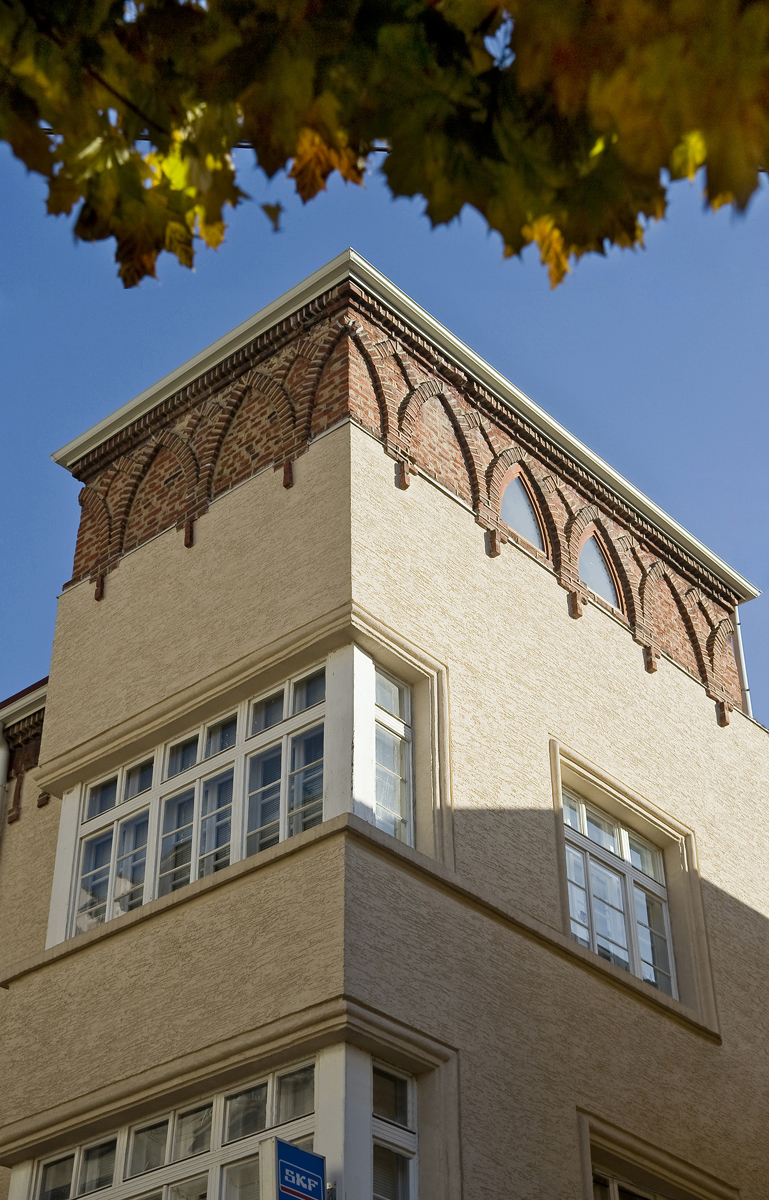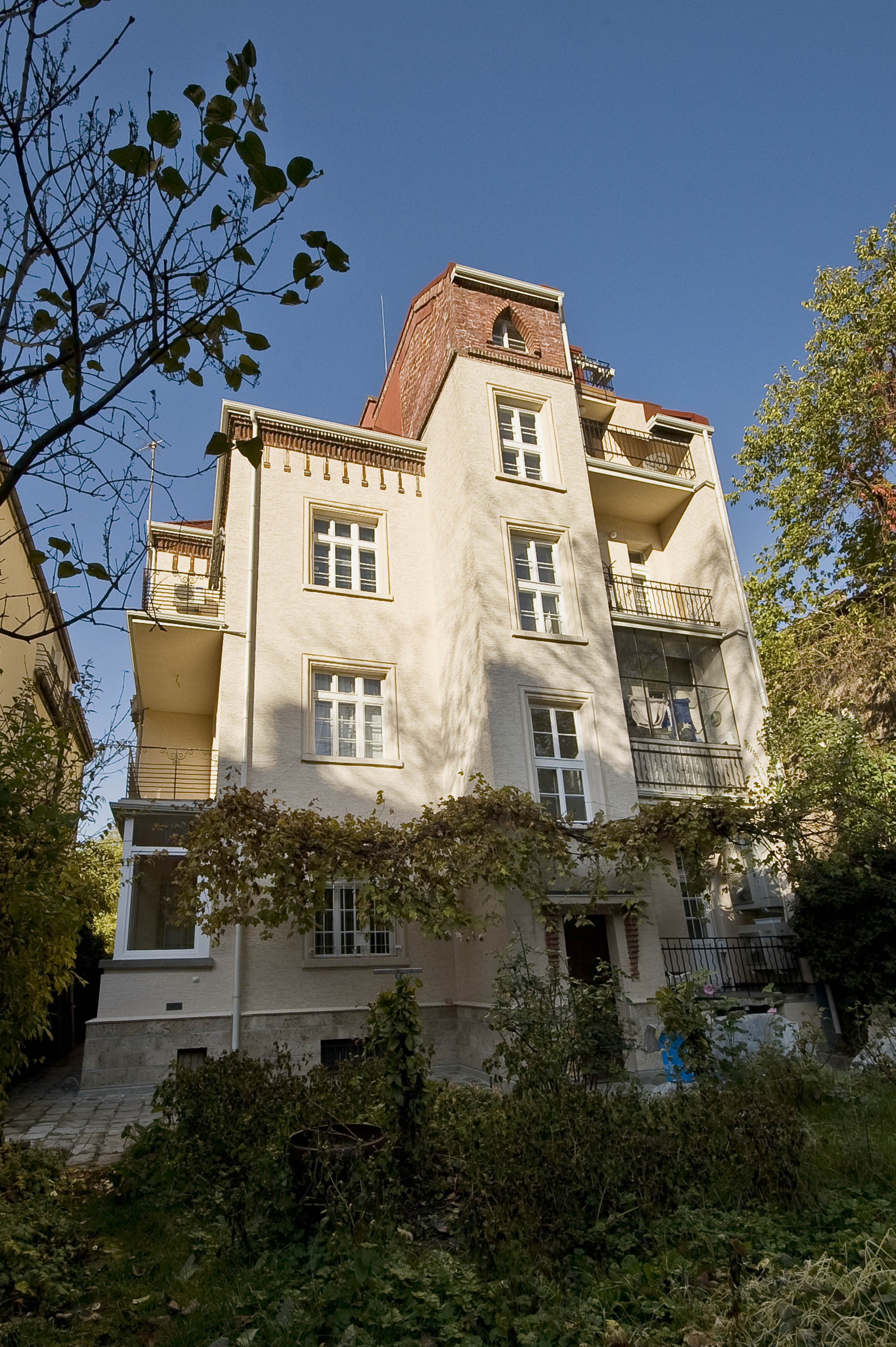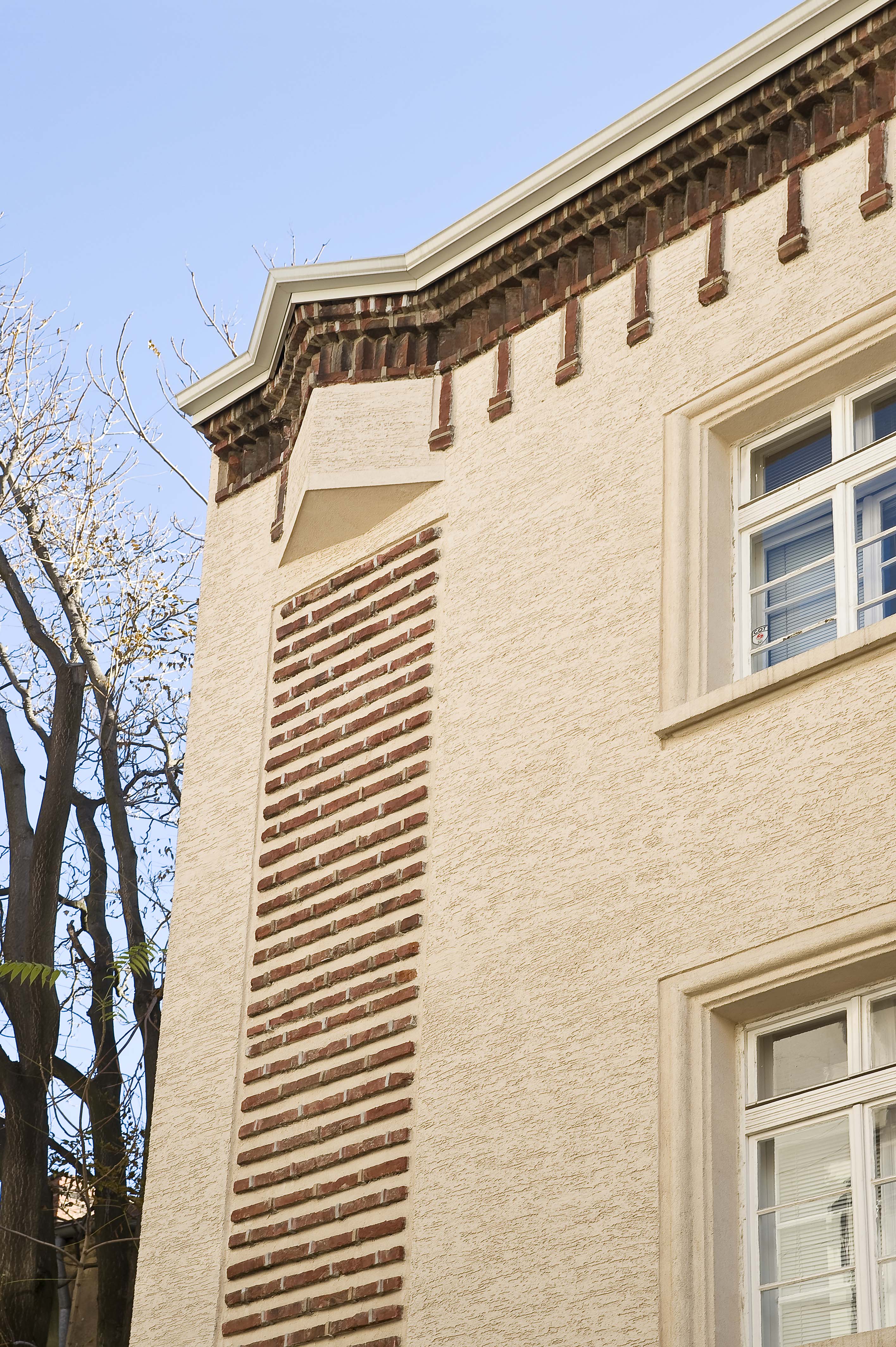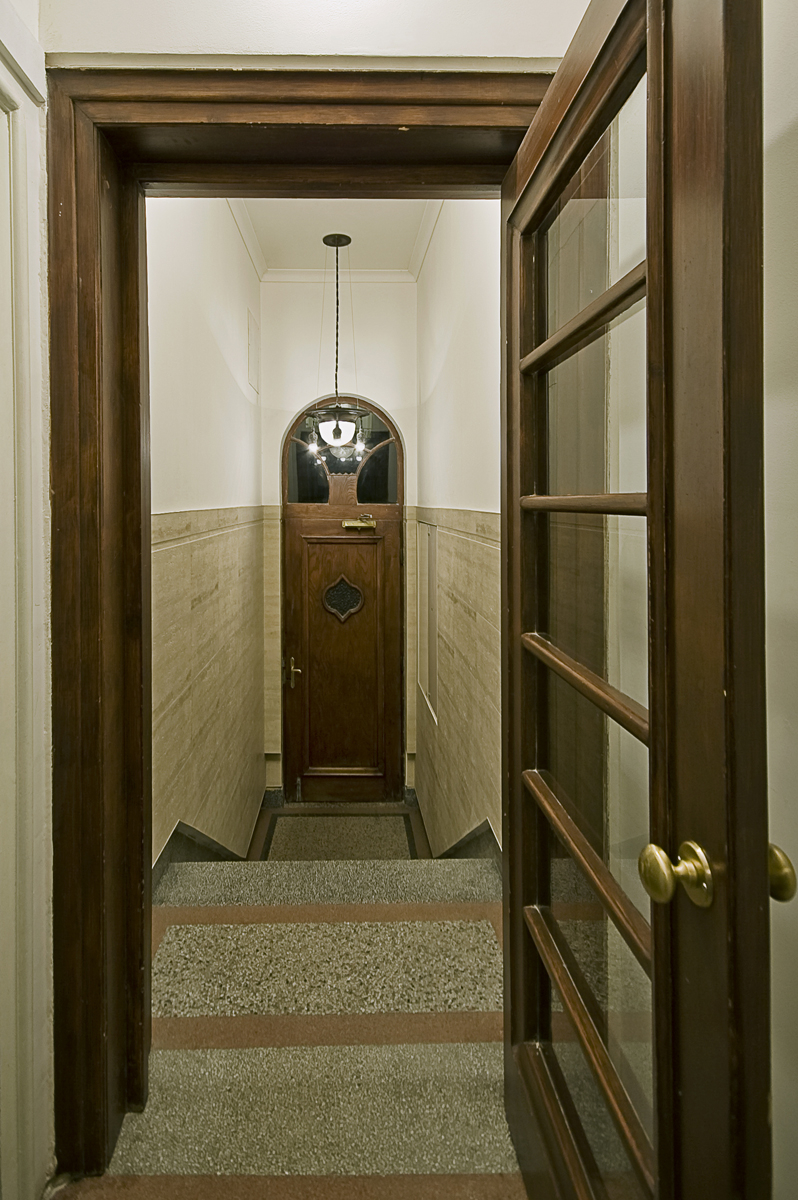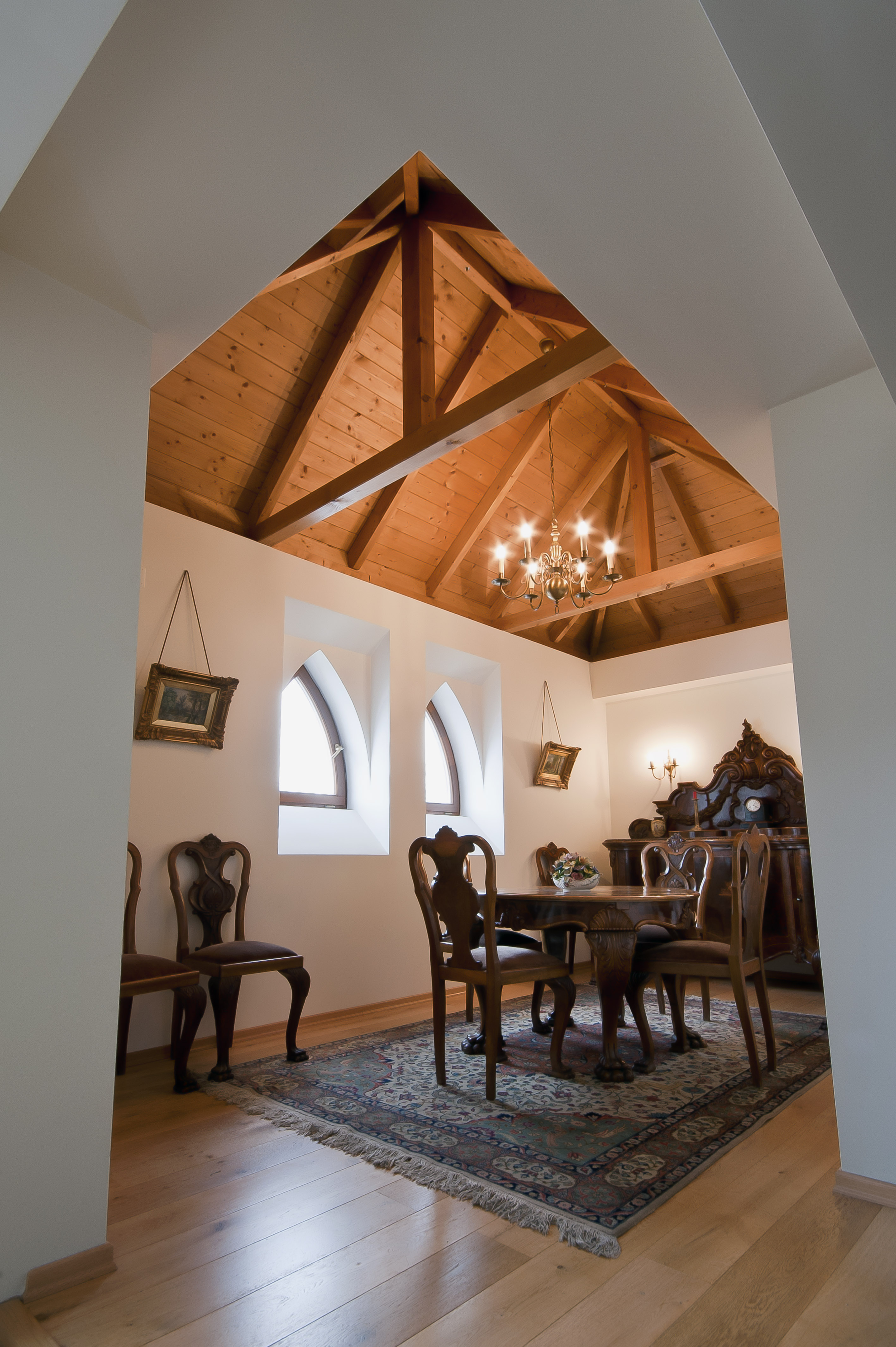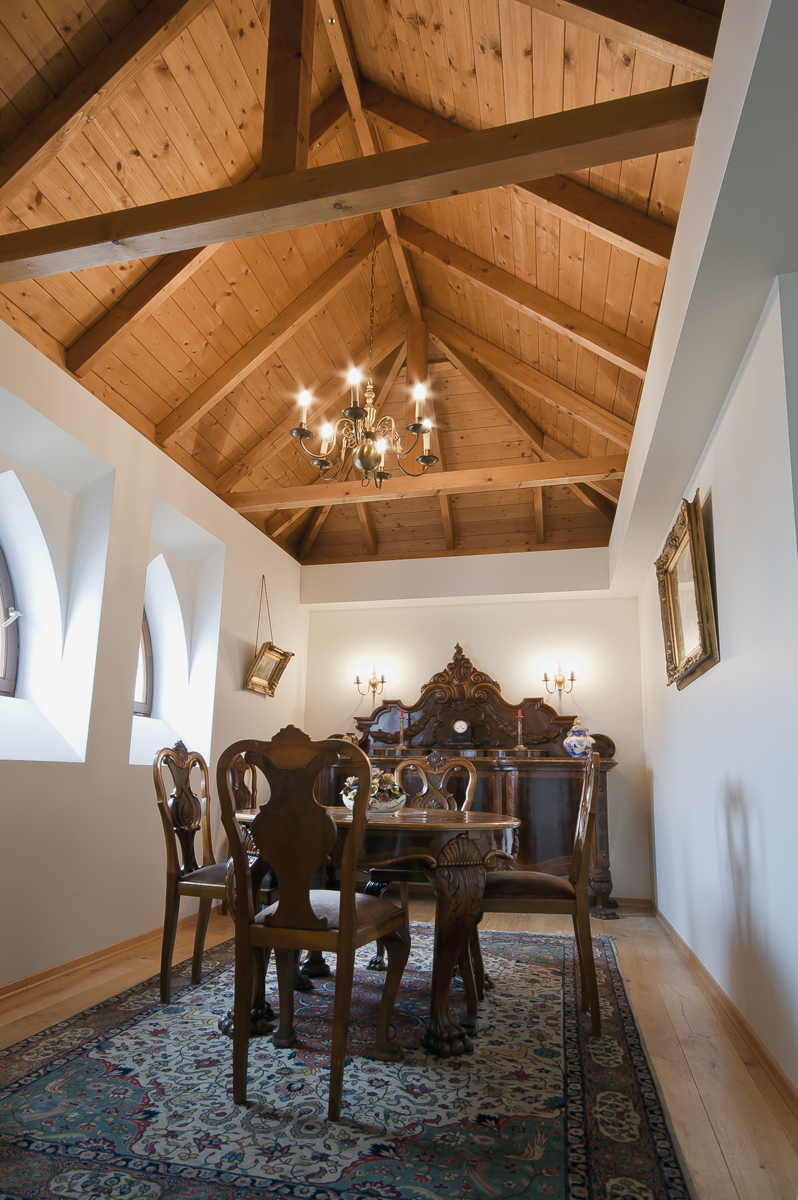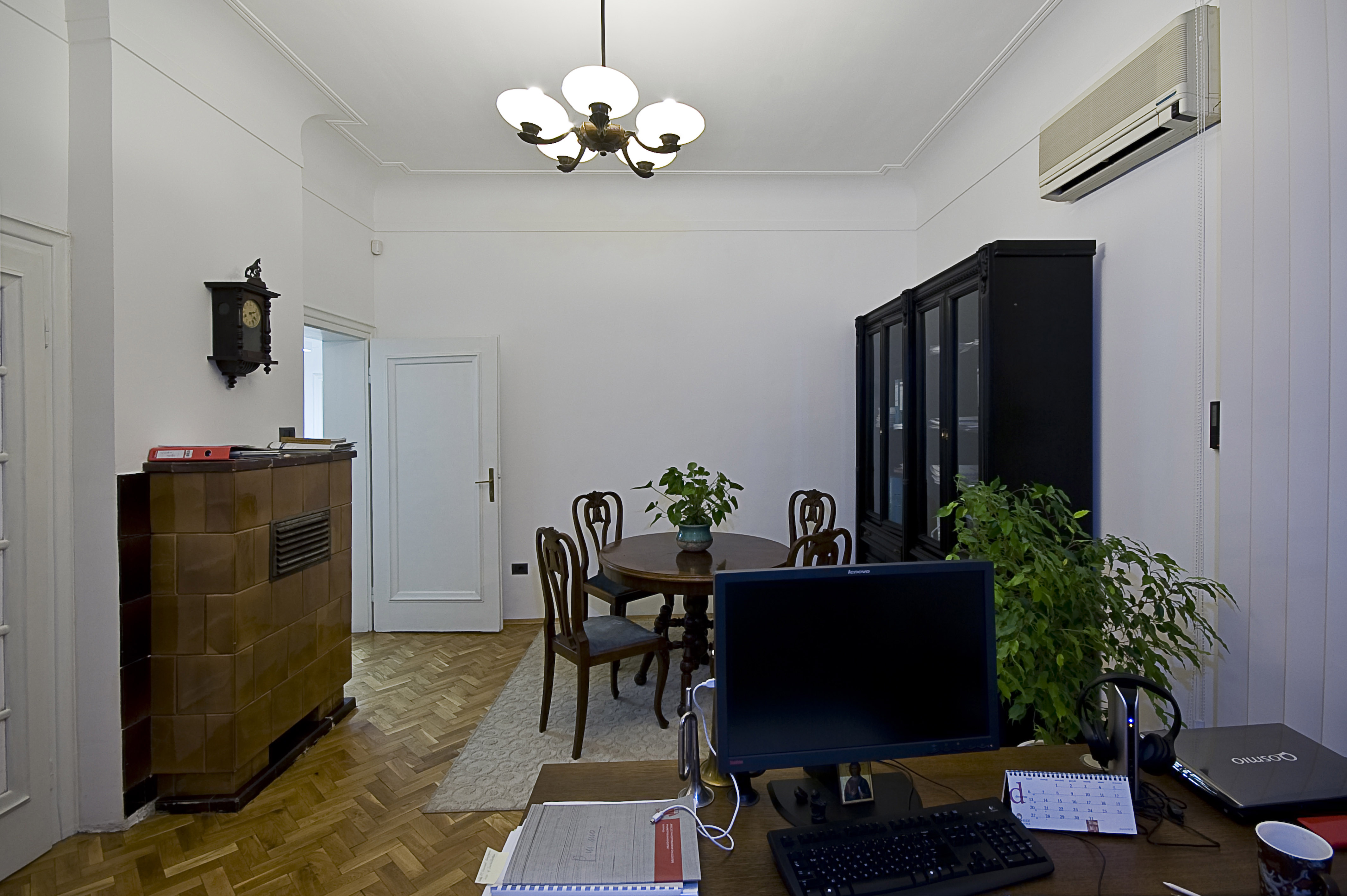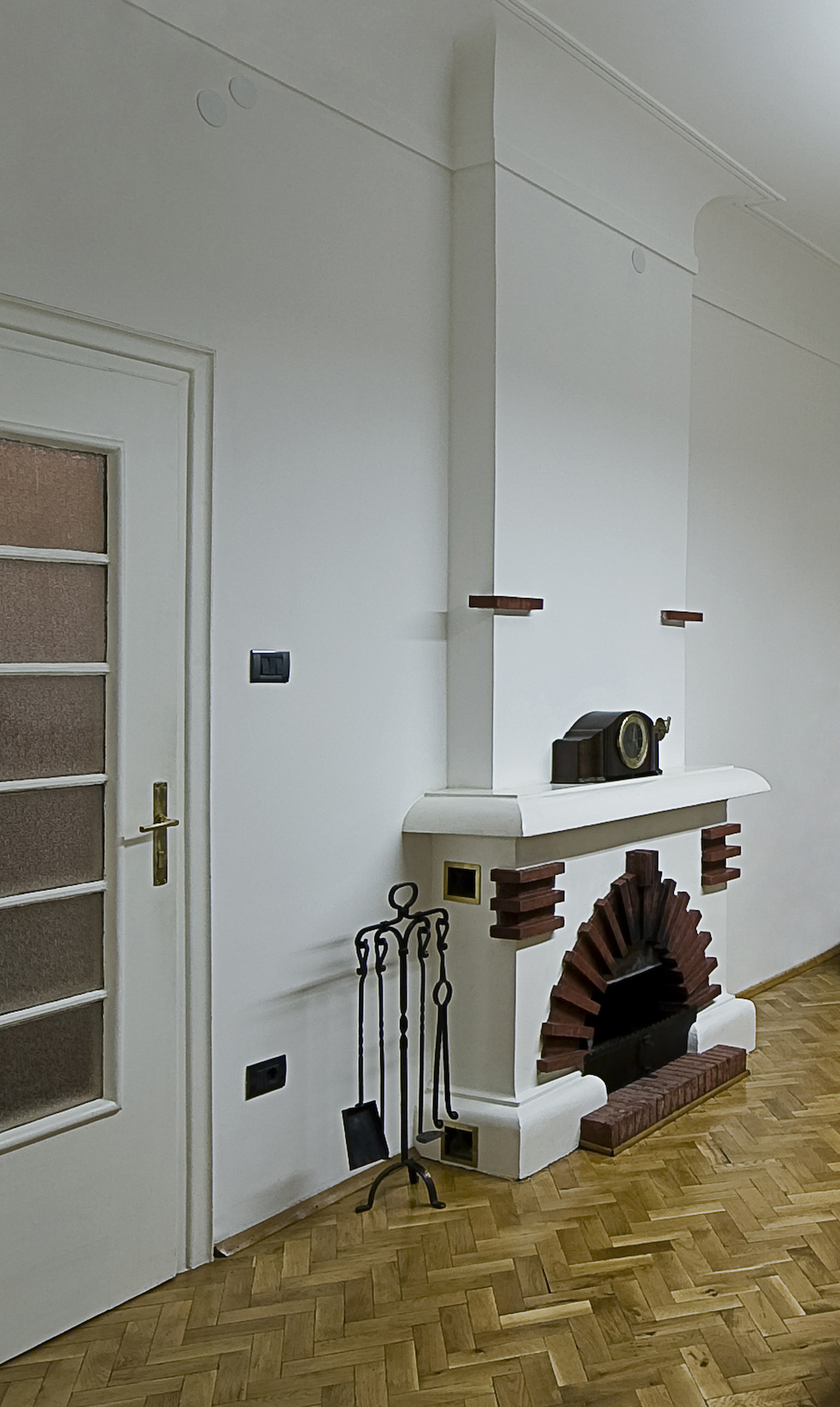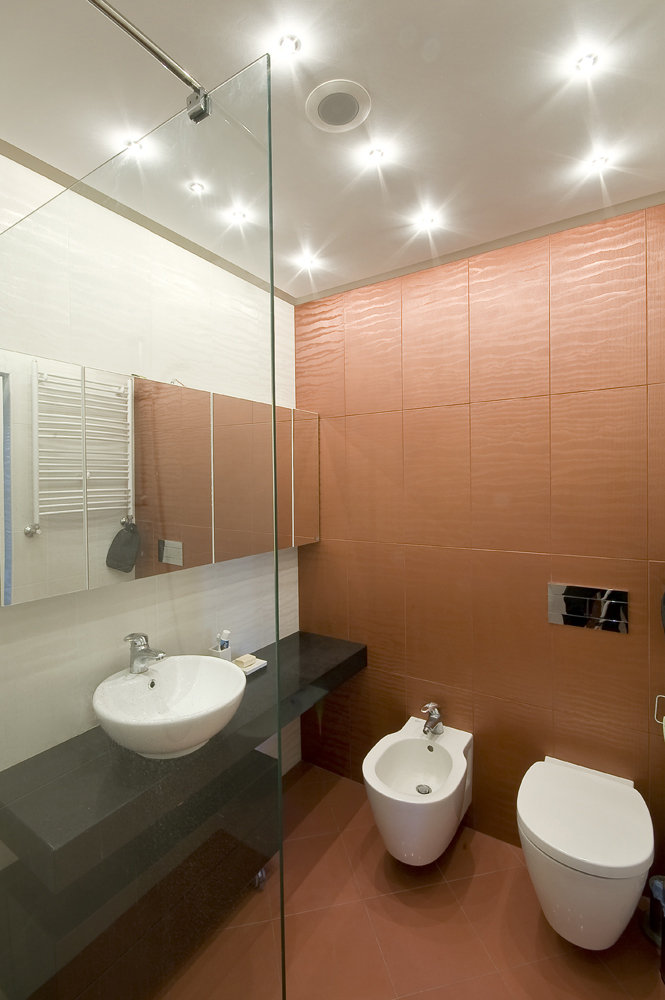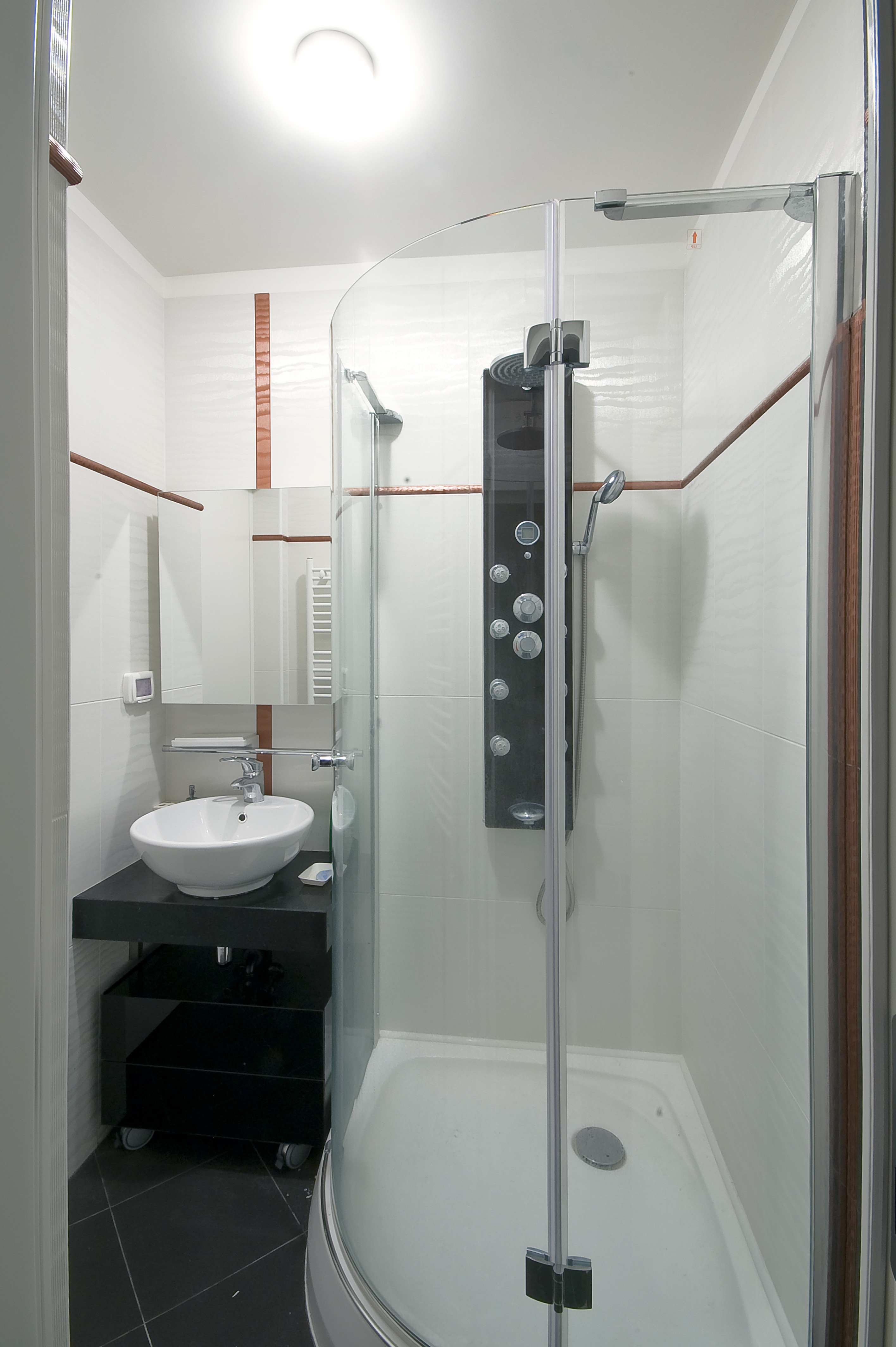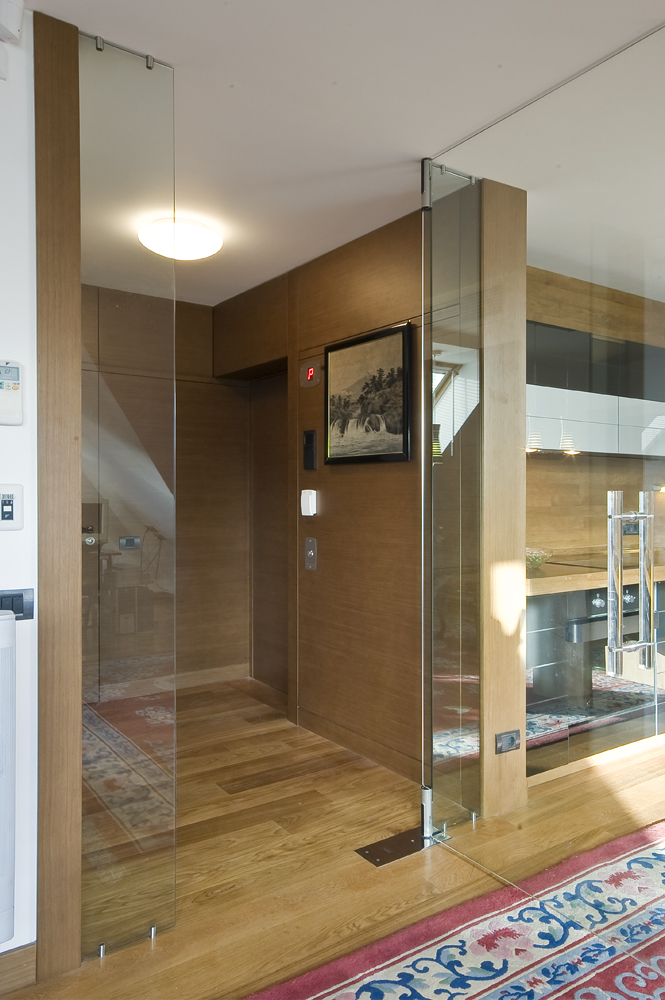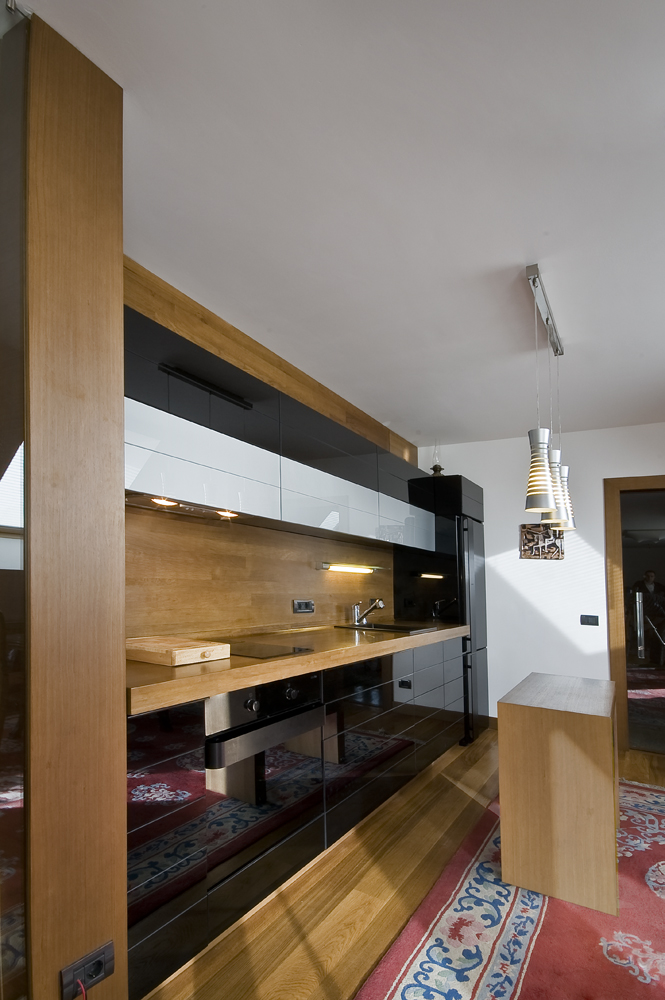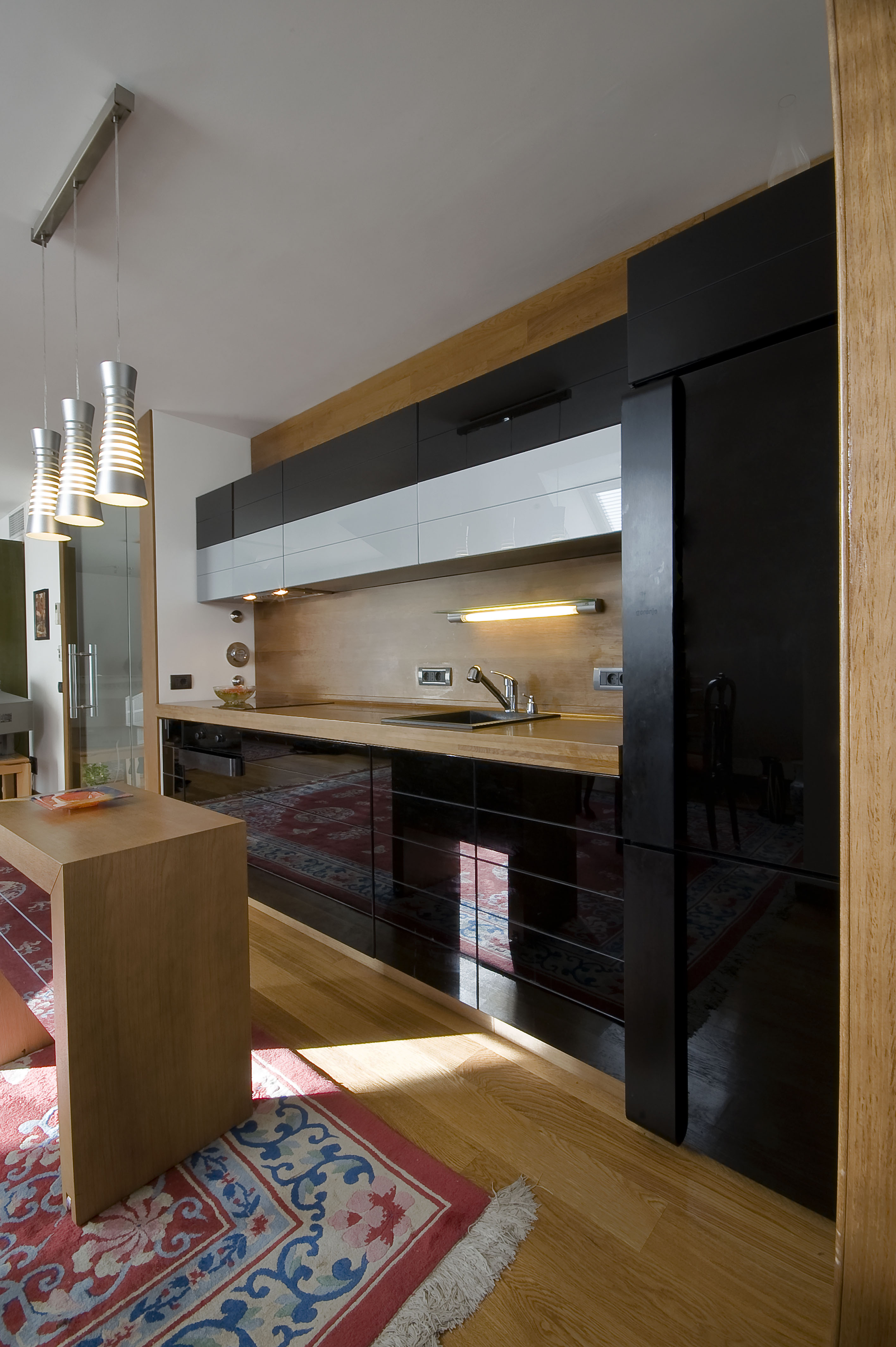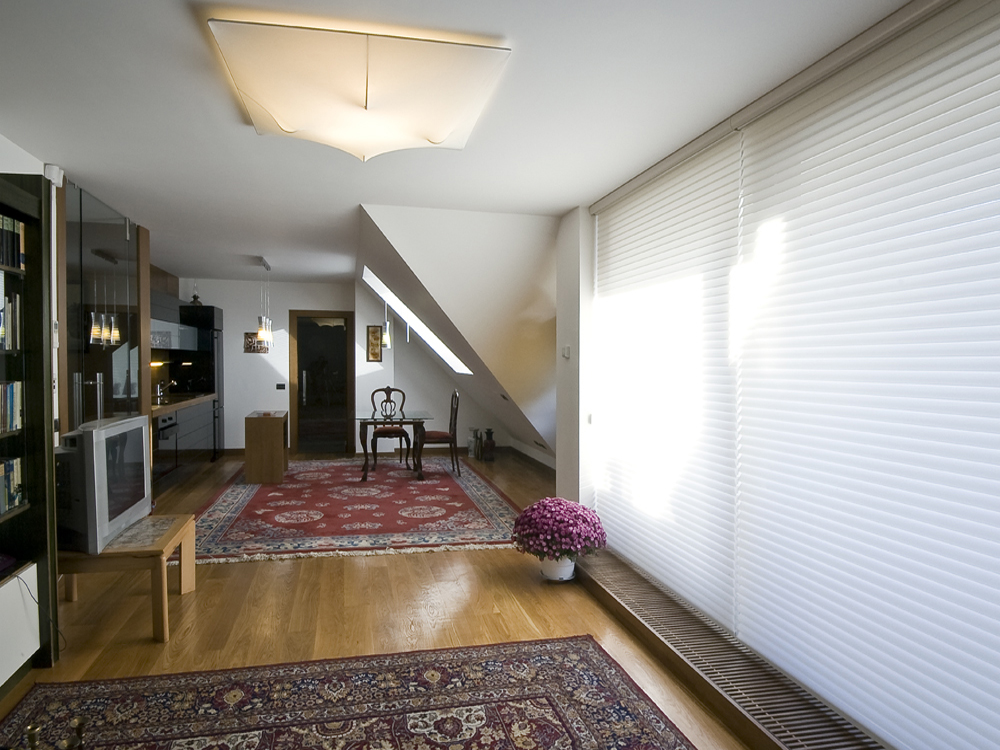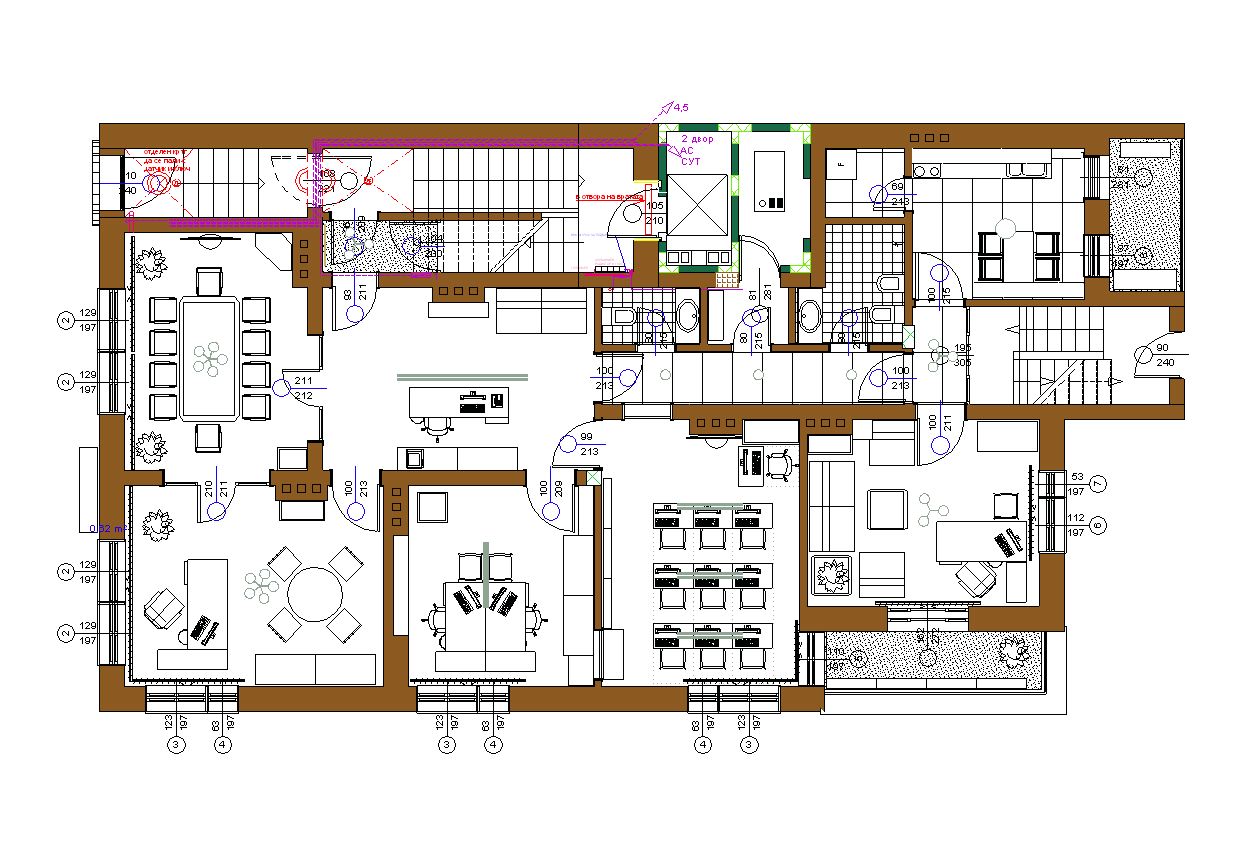Type: Residential building
Location: Sofia
Total built up area: 950 sq. m.
Year of completion: 2008
Arch. Krasimir Valkov; interiors: arch. Gergana Saralieva
The building is designed and constructed in 1929 by arch. Panteley Tzvetkov and professor arch. Svetoslav Goranov in the spirit of national romanticism: corner tower, reminiscent of the towers of the monasteries in Aton; vaulted entrance and plastically shaped oaken door; large grain-size dragged plaster, enriched by decorative visible bricks; wrought iron railings. In recognition of its architectural qualities, the building is registered as a monument of architecture in 1972.
Fate is not merciful toward the building: during the bombings in 1943 the roof burns down, in the 40s and 50s it is used for public needs, and later it is made available to the communal housing fund of Sofia (“Sofjilfond”) for exploitation. When the current owners take possession of the building, its condition is poor: leaking roof, fallen plaster, broken window frames, and worn out installations.
Starting renovation, reconstruction, and revamping of the installations and facilities, the owners have the conviction and the will not only to modernize the building, but to restore as much as possible the lost architectural elements. During the accomplishment of these goals they are forced to overcome a number of challenges.
First challenge: Rebuilding the roofing construction by means of concrete construction, utilizing the vast mansard space, and building two new units under the roof without altering the silhouette of the building. A suitable constructive solution is also found regarding the seismic safety of the building and the adjoining of the new concrete construction to the old massive one, without violating the architecture.
Second challenge: Remediation of the building, including replacement and modernization of all installations, montage of exterior thermal insulation, and repairs of the existing window frames. All of the existing architectural elements are conserved, while the damaged or missing ones are restored. The new plaster, with 5 mm grain size, is laid horizontally, as the practice has been in the 30s. For the lining of the washboard facing the yard, travertine is specially chosen. The main façade of the building is carried out in the same way.
Third challenge: The construction is carried out without interrupting the inhabitation of the building.
The approach that is applied for the façade is also extended toward the interior: conservation as much as possible of the original elements and details in the shaping of the entrance and the two staircases and the reconstruction of the old storey levels. The interiors are a combination of contemporary furnishing and comfort, but consistent with the overall architecture and style of the building. In order to preserve the character of the rooms to a maximum, especially on the main floors, the old furniture, chandeliers, and accessories are used. Preserved and restored are the fireplaces, the masonry stoves, the big wooden glass portals, and the original double-pane window frames.
Reconstructed and renewed, the building creates a stylish comfort for its inhabitants and together with the other preserved buildings of old Sofia treasures the spirit, the atmosphere, and the traditions of the city.



